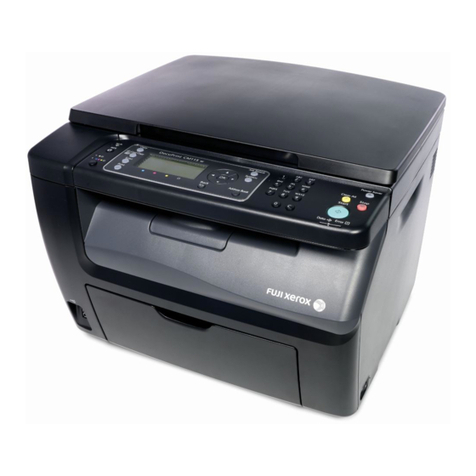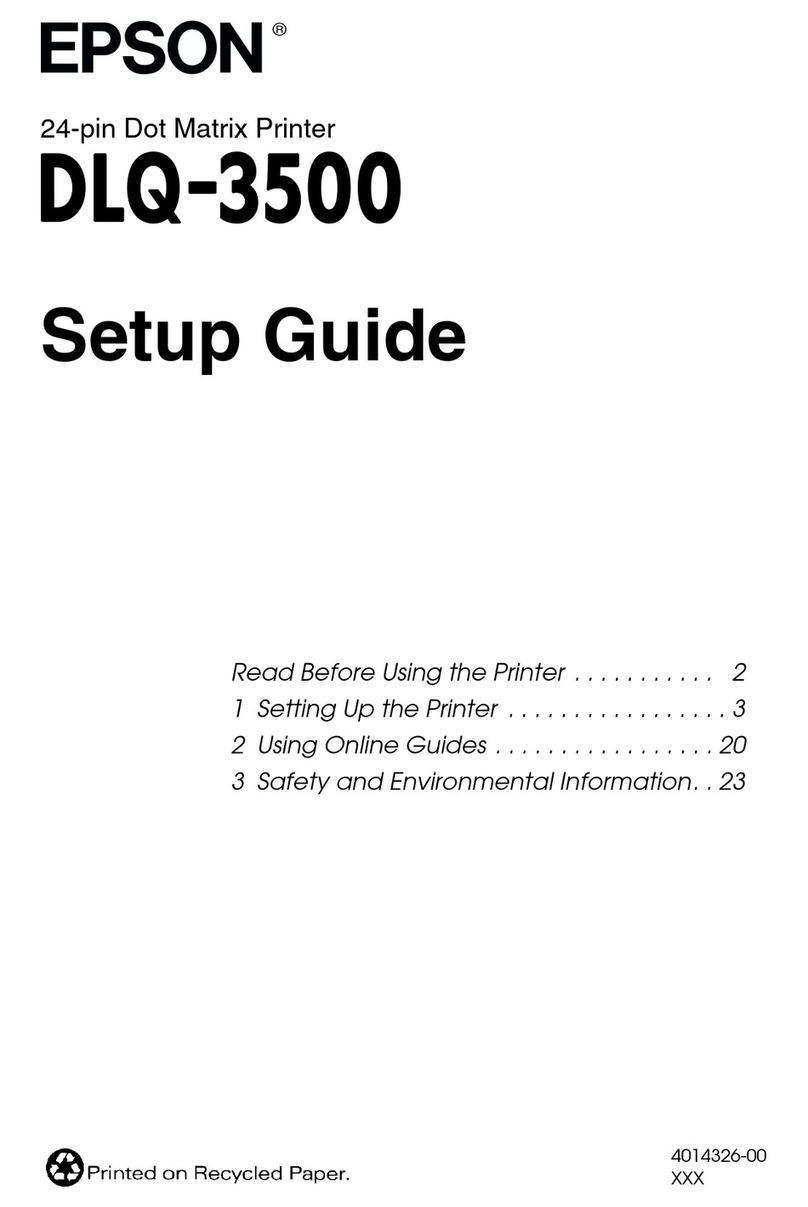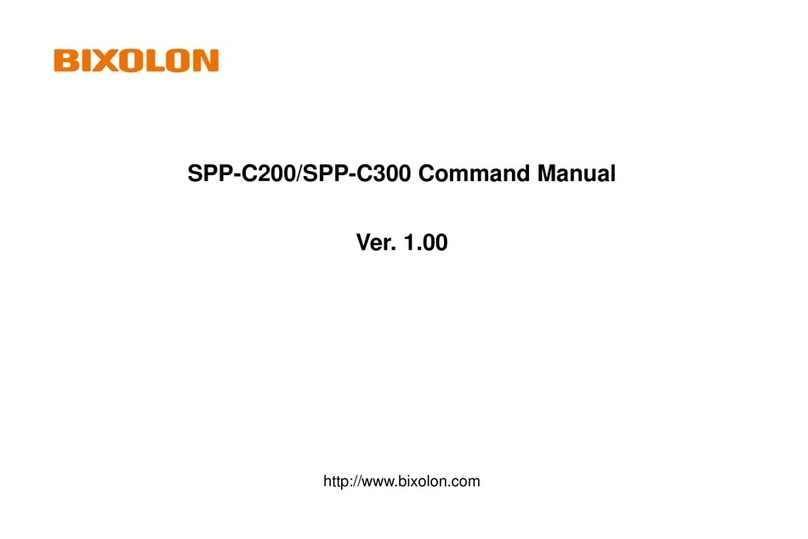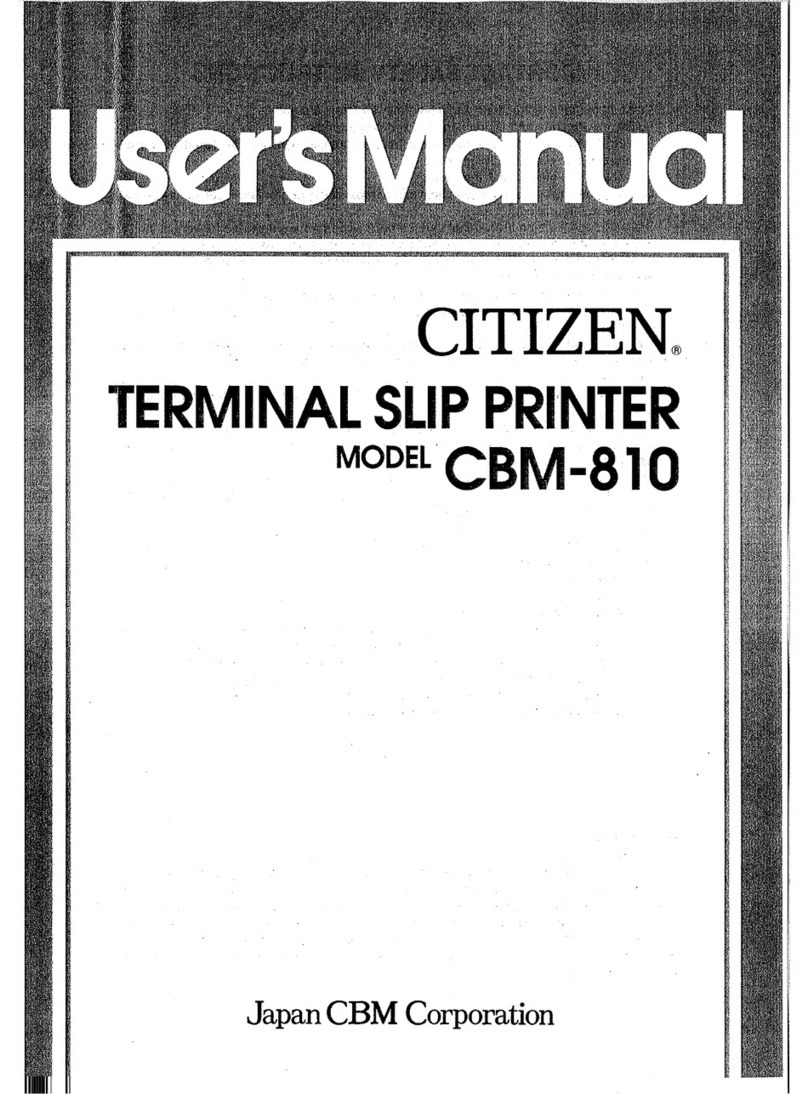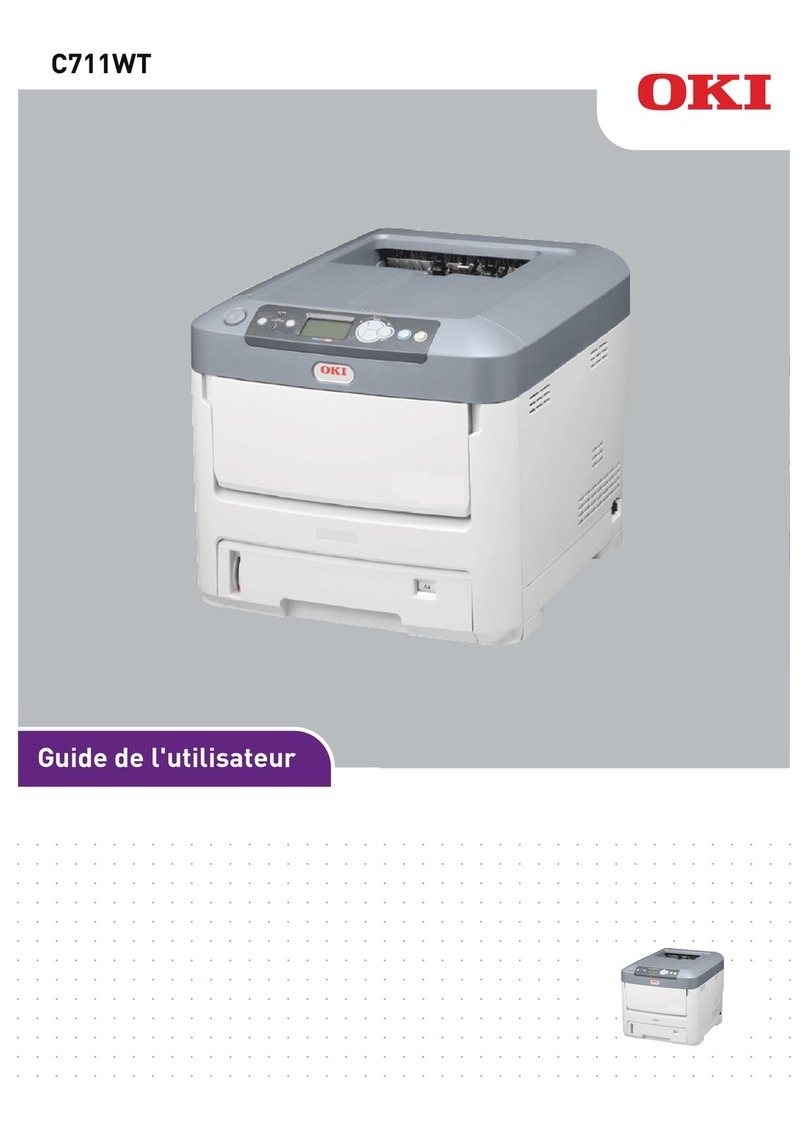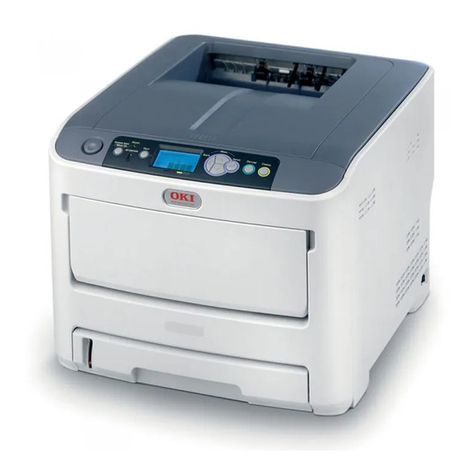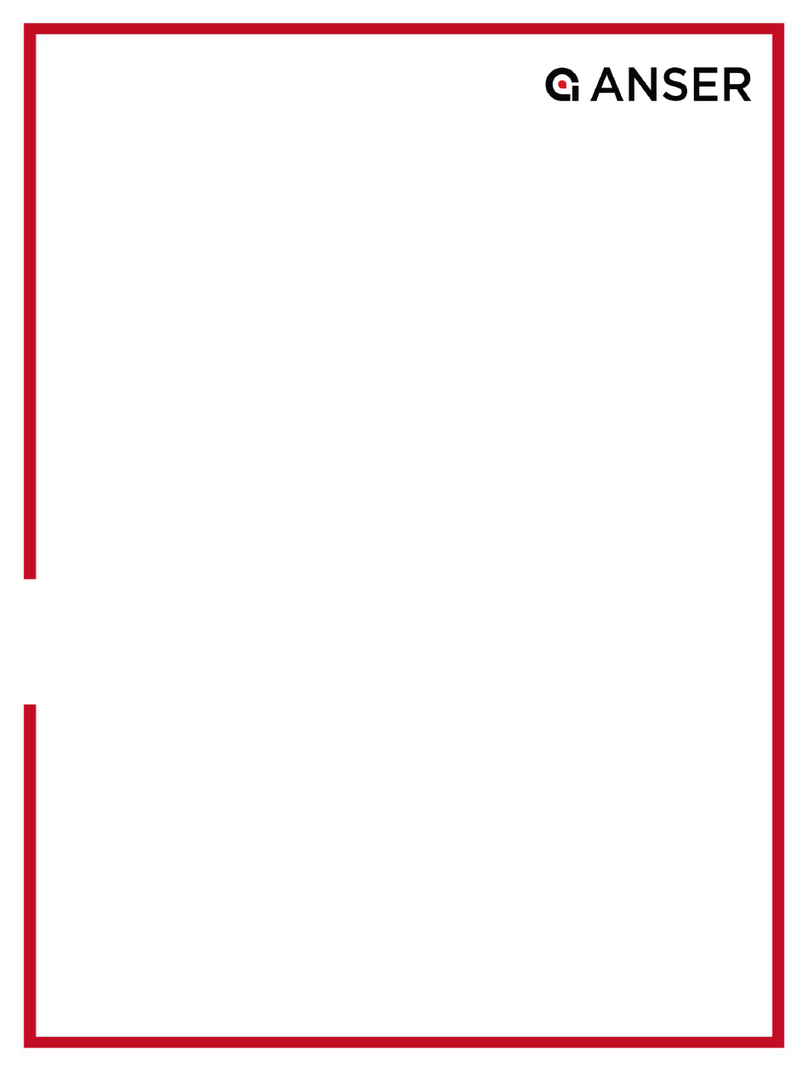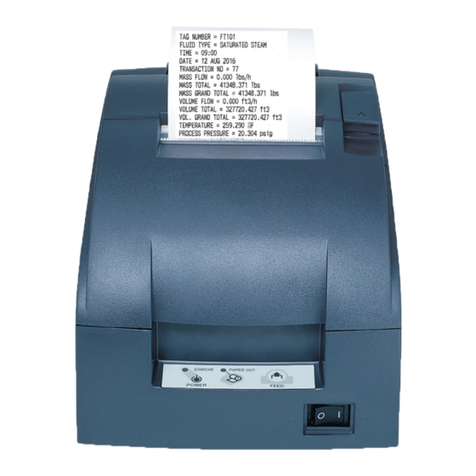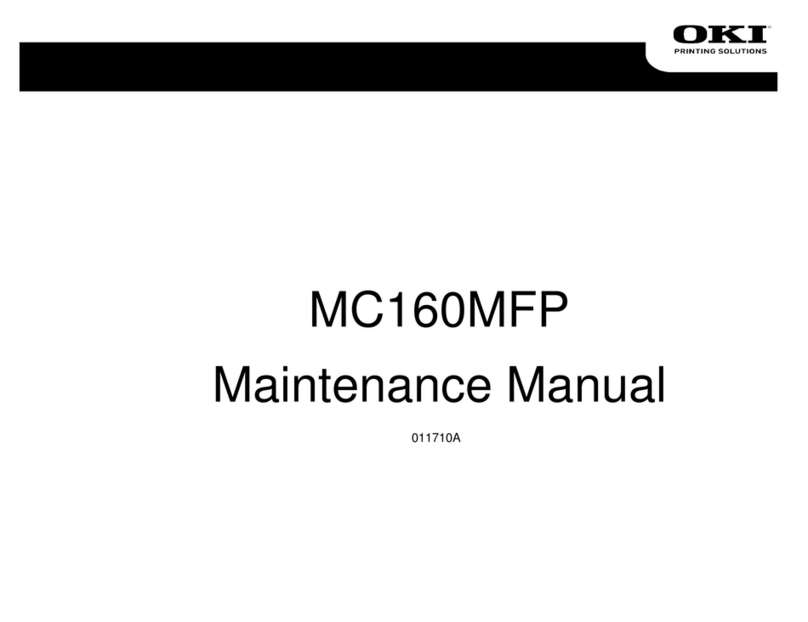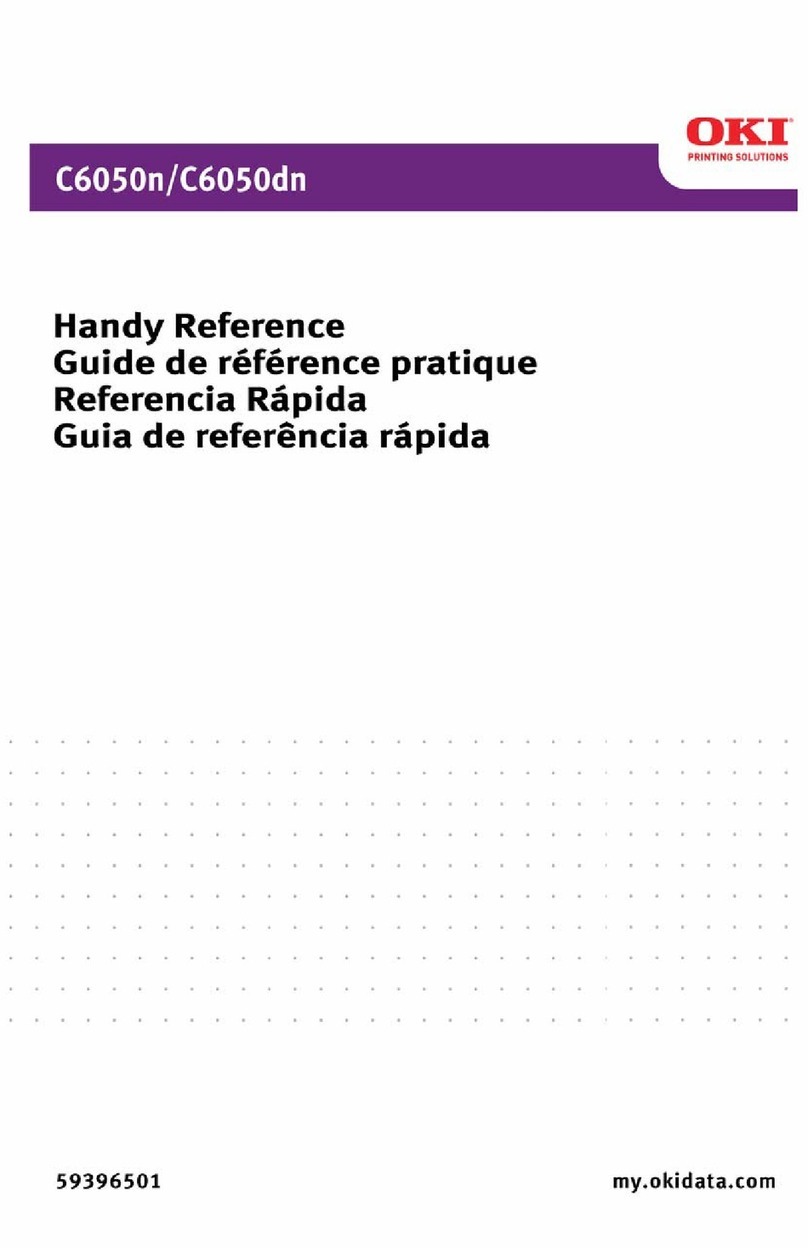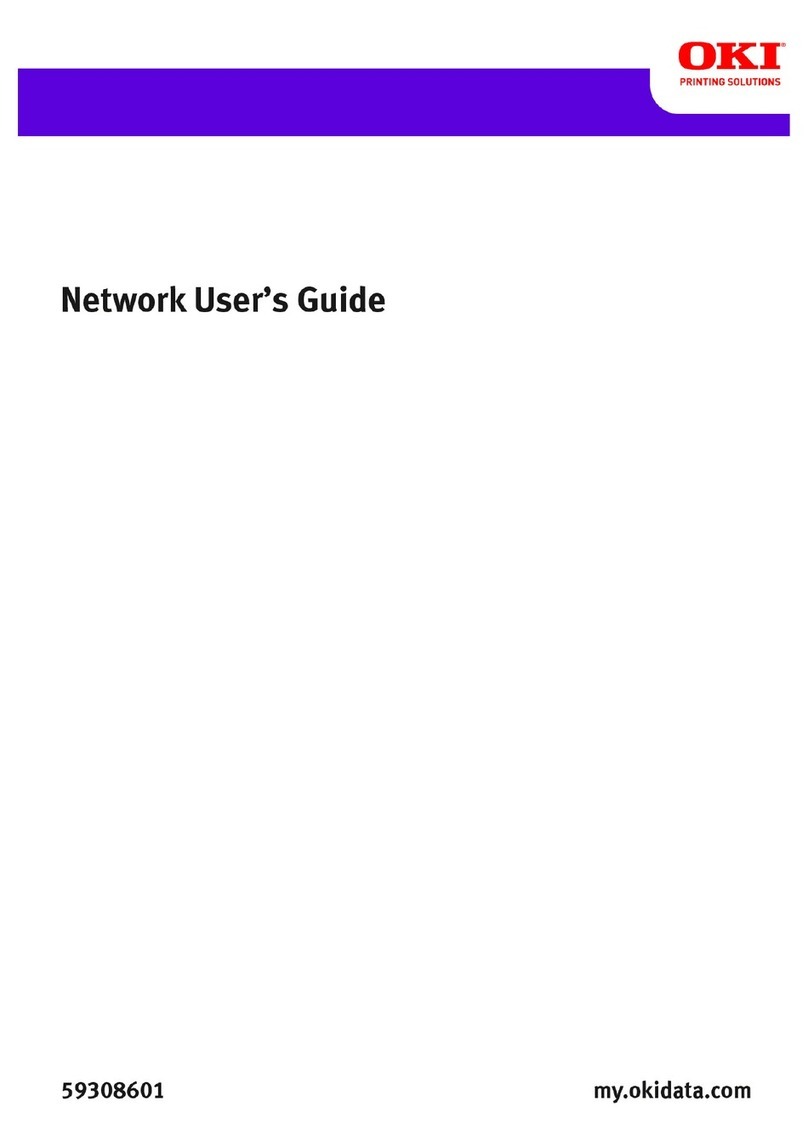Shandong BTP-2002NP Owner's manual

CONFIDENTIAL
PROGRAMMING MANUAL
Receipt Printer
BTP-2002NP
Shandong New Beiyang Information Technology Co., Ltd.

Confidential BTP-2002NP Programming Manual
- 1 -
REVISION HISTORY
Date Version Description Drafted by
December 6th, 2005 1.00 Primary version Mr. Peng yuanbin
December 6th, 2007 1.01 Add watermark command Mr.Yangmin

Confidential BTP-2002NP Programming Manual
Declaration
Information in this document is subject to change without notice. SHANDONG NEW BEIYANG
INFORMATION TECHNOLOGY CO., LTD. (hereinafter referred to as “SNBC”) reserves the right to
improve products as new technology, components, software, and firmware become available. If users
need further data about this products or have any doubt about safety issues that might arise from using it,
please feel free to contact SNBC or your local distributor.
No part of this document may be reproduced or transmitted in any form or by any means, electronic or
mechanical, for any purpose without the express written permission of SNBC.
Copyright
Copyright© 2005 by SNBC
Printed in China
Version 1.00
Trademarks
- 2 -
Our registered trademarks are
Contact us
Address: No.169 Huoju Rd, Hi-Tech Weihai, Shandong, China. 264209
Hot line: +86-631-5673777
Fax: +86-631-5673778
E-mail: [email protected]

Confidential BTP-2002NP Programming Manual
- 3 -
Contents
1 User Guide...........................................................................................................................................1
2 Command Description........................................................................................................................2
HT...................................................................................................................................................................................2
LF...................................................................................................................................................................................2
FF ...................................................................................................................................................................................2
CR...................................................................................................................................................................................3
CAN ...............................................................................................................................................................................3
DLE EOT N.....................................................................................................................................................................3
DLE ENQ N ....................................................................................................................................................................5
DLE DC4 N M T ..............................................................................................................................................................6
ESC FF ...........................................................................................................................................................................7
ESC SP N ........................................................................................................................................................................7
ESC !N ...........................................................................................................................................................................8
ESC $NLNH ..................................................................................................................................................................9
ESC %N .........................................................................................................................................................................9
ESC &Y C1C2[X1D1...D(Y ×X1)]...[XK D1...D(Y ×XK)].............................................................................................10
ESC *M NLNHD1... DK ...............................................................................................................................................11
ESC -N .........................................................................................................................................................................13
ESC 2............................................................................................................................................................................14
ESC 3N.........................................................................................................................................................................14
ESC =N ........................................................................................................................................................................14
ESC ?N.........................................................................................................................................................................15
ESC @..........................................................................................................................................................................15
ESC DN1...NK NUL .....................................................................................................................................................16
ESC EN ........................................................................................................................................................................16
ESC GN........................................................................................................................................................................17
ESC JN .........................................................................................................................................................................17
ESC L ...........................................................................................................................................................................18
ESC MN .......................................................................................................................................................................18
ESC RN........................................................................................................................................................................19
ESC S............................................................................................................................................................................19
ESC TN ........................................................................................................................................................................20
ESC VN........................................................................................................................................................................21
ESC WXLXHYLYHDXLDXHDYLDYH...................................................................................................................21
ESC \NLNH .................................................................................................................................................................22
ESC A N ........................................................................................................................................................................23
ESC C 0N......................................................................................................................................................................24
ESC C 3N......................................................................................................................................................................24
ESC C 4N......................................................................................................................................................................25
ESC C 5N......................................................................................................................................................................25
ESC D N ........................................................................................................................................................................26
ESC P M T1T2...............................................................................................................................................................26

Confidential BTP-2002NP Programming Manual
- 4 -
ESC T N.........................................................................................................................................................................26
ESC {N.........................................................................................................................................................................27
FS G 1M A1A2A3A4NLNHD1...DK............................................................................................................................28
FS G 2M A1A2A3A4NLNH ........................................................................................................................................29
FS P N M ........................................................................................................................................................................30
FS Q N [XLXHYLYHD1...DK]1...[XLXHYLYHD1...DK]N........................................................................................30
GS FF............................................................................................................................................................................32
GS !N............................................................................................................................................................................33
GS $NLNH...................................................................................................................................................................34
GS (APLPHN M..........................................................................................................................................................34
GS *X Y D1...D(X ×Y ×8).............................................................................................................................................35
GS /M ...........................................................................................................................................................................36
GS :...............................................................................................................................................................................36
GS BN ..........................................................................................................................................................................37
GS HN..........................................................................................................................................................................37
GS IN............................................................................................................................................................................38
GS LNLNH..................................................................................................................................................................39
GS PX Y........................................................................................................................................................................39
①GS VM ②GS VM N.................................................................................................................................................40
GS WNLNH.................................................................................................................................................................41
GS \NLNH ...................................................................................................................................................................41
GS ^R T M.....................................................................................................................................................................42
GS A N...........................................................................................................................................................................43
GS F N ...........................................................................................................................................................................45
GS H N...........................................................................................................................................................................45
①GS K M D1...DK NUL②GS K M N D1...DN.................................................................................................................45
GS P N ...........................................................................................................................................................................48
GS Q N...........................................................................................................................................................................48
GS R N...........................................................................................................................................................................49
GS V 0M XLXHYLYHD1....DK...................................................................................................................................50
GS W N..........................................................................................................................................................................51
GS {W ..........................................................................................................................................................................51
GS {W F........................................................................................................................................................................51
3 Kanji Control Commands .................................................................................................................52
FS !N ............................................................................................................................................................................52
FS &..............................................................................................................................................................................53
FS -N ............................................................................................................................................................................53
FS .................................................................................................................................................................................54
FS 2C1C2D1...DK ........................................................................................................................................................55
FS CN...........................................................................................................................................................................56
FS SN1N2 ....................................................................................................................................................................56
FS WN..........................................................................................................................................................................57
Appendix A: Code128 Bar Code .........................................................................................................58
A.1 DESCRIPTION OF THE CODE128 BAR CODE...........................................................................................................58

Confidential BTP-2002NP Programming Manual
- 5 -
A.2 CODE TABLES.........................................................................................................................................................59
Appendix B: Page Mode ......................................................................................................................62
B.1 GENERAL DESCRIPTION..........................................................................................................................................62
B.2 SETTING VALUES IN STANDARD AND PAGE MODES ...............................................................................................63
B.3 FORMATTING OF PRINT DATA IN THE PRINTABLE AREA.........................................................................................64
Appendix C: Character Code Tables ..................................................................................................67
C1 PAGE 0(PC437: USA).............................................................................................................................................67
C2 PAGE1 (KATAKANA)...............................................................................................................................................68
C3 PAGE 2(PC850: MULTILINGUAL)............................................................................................................................69
C4 PAGE 3(PC860: PORTUGUESE) ................................................................................................................................70
C5 PAGE 4(PC863: CANADIAN-FRENCH) .....................................................................................................................71
C6 PAGE 5(PC865: NORDIC) ........................................................................................................................................72
C7 PAGE 18 (PC852 LATIN2).......................................................................................................................................73
C8 PAGE 19 (PC858).....................................................................................................................................................74
C9 PAGE 16 (WPC1252) ...............................................................................................................................................75
C10 PAGE 17 (PC866: CYRILLIC #2) .............................................................................................................................76
C11 INTERNATIONAL CHARACTER SET..........................................................................................................................77
Control Sequences...............................................................................................................................78

Confidential BTP-2002NP Programming Manual
1 User Guide
This section explains to users how to use this programming manual. Please read it carefully before
programming.
The command explanation in this manual includes the following parts.
1)[Name] the name and function summary. This is the first part of the command explanation
in which the command is expressed in ASCII.
2)[Format] the command expressed in ASCII, Hex and Decimal separately. If not specified,
the value in “range” part is decimal. For instance, in range” 1 ≤n≤4”, ‘1’ is not an
ASCII code but a decimal number.
3)[Range] the range of variation value.
4)[Description]the detailed explanation of command.
5)[Note] Lists items shall be given attention to. The command may function differently in
different modes or while cooperating with other commands and the details are
given in this paragraph.
6)[Reference] Lists all other commands related or similar to the command.
---> DLE EOT n
---> [Name] Real-time status transmission
---> [Format] ASCII DLE EOT n
Hex 10 04 n
Decimal 16 4 n
---> [Range] 1 ≤n ≤4
---> [Description] Transmits the printer status specified by ‘n’ in real-time.
---> [Note] The printer will return relevant status immediately after receiving this command.
---> [Reference] None
- 1 -

Confidential BTP-2002NP Programming Manual
- 2 -
2 Command Description
HT
[Name] Horizontal tab
[Format] ASCII HT
Hex 09
Decimal 9
[Description] Moves the print position to the next horizontal tab position.
[Notes] • This command is ignored unless the next horizontal tab position has been set.
• If the next horizontal tab position exceeds the printing area, the printer sets the printing
position to [Printing area width + 1].
• Horizontal tab positions are set with ESC D.
• If this command is received when the printing position is at [printing area width + 1], the
printer executes print buffer-full printing of the current line and horizontal tab processing
from the beginning of the next line.
• The default setting of the horizontal tab position for the paper roll is font A(12×24) every
8th character.
[Reference] ESC D
LF
[Name] Print and line feed
[Format] ASCII LF
Hex 0A
Decimal 10
[Description] Prints the data in the print buffer and feeds one line based on the current line spacing.
[Note] This command sets the print position to the beginning of the line.
[Reference] ESC 2, ESC 3
FF
[Name] Print and return to standard mode in page mode.
[Format] ASCII FF
Hex 0C
Decimal 12
[Description] Prints the data in the print buffer collectively and returns to standard mode in page mode,
prints the data in the print buffer and feeds one line based on the current line spacing in
standard mode.
[Notes] · This command is valid only in page mode.
· The buffer data is deleted after being printed.
· The printer does not execute paper cutting.
· This command sets the print position to the beginning of the line.
[Reference] ESC FF, ESC L, ESC S

Confidential BTP-2002NP Programming Manual
- 3 -
CR
[Name] Print and carriage return
[Format] ASCII CR
Hex 0D
Decimal 13
[Description] When automatic line feed is enabled, this command functions the same as LF; when
automatic line feed is disabled, this command is ignored.
[Notes] · Sets the print starting position to the beginning of the line.
· This command is set according to the printer configuration.
[Reference] LF
CAN
[Name] Cancel print data in page mode
[Format] ASCII CAN
Hex 18
Decimal 24
[Description] In page mode, deletes all the print data in the current area.
[Notes] · This command is enabled only in page mode.
· If data that existed in the previously specified printing area also exists in the currently
specified printing area, it is deleted.
[Reference] ESC L, ESC W
DLE EOT n
[Name] Real-time status transmission
[Format] ASCII DLE EOT n
Hex 10 04 n
Decimal 16 4 n
[Range] 1 ≤n ≤4
[Description] Transmits the selected printer status specified by n in real-time, according to the following
parameters:
n = 1: Transmit printer status
n = 2: Transmit off-line status
n = 3: Transmit error status
n = 4: Transmit paper roll sensor status
[Notes] · The status is transmitted whenever the data sequence of <10>H<04>H< n>
(1 ≤n ≤4) is received.
Example:
In ESC * m nL nH d1...dk, d1=<10>H, d2=<04>H, d3=<01>H
· This command should not be used within the data sequence of another command that
consists of 2 or more bytes.

Confidential BTP-2002NP Programming Manual
- 4 -
Example:
If you attempt to transmit ESC 3 n to the printer, but DTR (DSR for the host computer)
goes to MARK before n is transmitted and then DLE EOT 3 interrupts before n is received,
the code <10>H for DLE EOT 3 is processed as the code for ESC 3 <10>H.
· Even though the printer is not selected using ESC = (select peripheral device), this
command is effective.
· The printer transmits the current status. Each status is represented by one-byte data.
· The printer transmits the status without confirming whether the host computer can receive
data.
· The printer executes this command upon receiving it.
· This command is executed even when the printer is off-line, the receive buffer is full, or
there is an error status with a serial interface model.
· With a parallel interface model, this command is ignored.
· When Auto Status Back (ASB) is enabled using the GS a command, the status
transmitted by the DLE EOT command and the ASB status must be differentiated.
n = 1: Printer status
Bit Off/On Hex Decimal Function
0 Off 00 0 Not used. Fixed to Off
1 On 02 2 Not used. Fixed to On
Off 00 0 Drawer open/close signal is LOW (connector pin 3)2
On 04 4 Drawer open/close signal is HIGH (connector pin 3)
Off 00 0 On-line.3
On 08 8 Off-line
4 On 10 16 Not used. Fixed to On
5,6 Undefined
7 Off 00 00 Not used. Fixed to Off.
n = 2: Off-line status
Bit Off/On Hex Decimal Function
0 Off 00 0 Not used. Fixed to Off
1 On 02 2 Not used. Fixed to On
Off 00 0 Cover is closed.2
On 04 4 Cover is open
Off 00 0 Paper is not being fed by using the FEED button3
On 08 8 Paper is being fed by the FEED button
4 On 10 16 Not used. Fixed to On
Off 00 0 No paper-end stop.5
On 20 32 Printing is being stopped.
Off 00 0 No error.6
On 40 64 Error occurs
7 Off 00 0 Not used. Fixed to Off

Confidential BTP-2002NP Programming Manual
- 5 -
Bit 5: Becomes on when the paper end sensor detects paper end and printing.
n = 3: Error status
Bit Off/On Hex Decimal Function
0 Off 00 0 Not used. Fixed to Off
1 On 02 2 Not used. Fixed to On
2 Undefined
Off 00 0 No auto-cutter error
3 On 08 8 Auto-cutter error occurs.
4 On 10 16 Not used. Fixed to On
Off 00 0 No unrecoverable error
5 On 20 32 Unrecoverable error occurs
Off 00 0 No auto-recoverable error.
6 On 40 64 Auto recoverable error occurs
7 Off 00 0 Not used. Fixed to Off
Bit 3: If these errors occur due to paper jams or the like, it is possible to recover by correcting the cause
of the error and executing DLE ENQ n (1 ≤n ≤2). If an error due to a circuit failure (e.g. wire break)
occurs, it is impossible to recover.
Bit 6: When printing is stopped due to high print head temperature until the print head temperature drops
sufficiently or when the paper roll cover is open during printing, bit 6 is On.
n = 4: Continuous paper sensor status
Bit Off/On Hex Decimal Function
0 Off 00 0 Not used. Fixed to Off
1 On 02 2 Not used. Fixed to On
Off 00 0 Paper roll near-end sensor: paper adequate
2,3 On 0C 12 Paper near-end is detected by the paper roll near-end
4 On 10 16 Not used. Fixed to On.
Off 00 0 Paper roll sensor: Paper present
5,6 On 60 96 Paper roll end detected by paper roll sensor.
7 Off 00 0 Not used. Fixed to Off
[Reference] DLE ENQ, GS a, GS r
DLE ENQ n
[Name] Real-time request to printer
[Format] ASCII DLE ENQ n
Hex 10 05 n
Decimal 16 5 n
[Range] 1 ≤n ≤2
[Description] Responds to a request from the host computer, n specifies the requests as follows:
n Request
1Recover from an error and restart printing from the line where the error occurred
2Recover from an error after clearing the receive and print buffers

Confidential BTP-2002NP Programming Manual
- 6 -
[Notes] · This command is effective only when an auto-cutter error occurs.
· The printer starts processing data upon receiving this command.
· This command is executed even when the printer is off-line, the receive buffer is full, or
there is an error status with a serial interface model.
· With a parallel interface model, this command can not be executed when the printer is
busy.
· The status is also transmitted whenever the data sequence of <10>H<05>H< n>
(1 ≤n ≤2) is received.
Example:
In ESC * m nL nH dk, d1 = <10>H, d2 = <05>H, d3 = <01>H
· This command should not be contained within another command that consists of two or
more bytes.
Example:
If you attempt to transmit ESC 3 n to the printer, but DTR (DSR for the host computer)
goes to MARK before n is transmitted, and DLE ENQ 2 interrupts before n is received,
the code <10>H for DLE ENQ 2 is processed as the code for ESC 3 <10>H.
· DLE ENQ 2 enables the printer to recover from an error after clearing the data in the
receive buffer and the print buffer. The printer retains the settings (by ESC !, ESC 3, etc.)
that were in effect when the error occurred. The printer can be initialized completely by
using this command and ESC @. This command is enabled only for errors that have the
possibility of recovery, except for print head temperature error.
· When the printer is disabled with ESC = (Select peripheral device), the error recovery
functions (DLE ENQ 1 and DLE ENQ 2) are enabled, and the other functions are
disabled.
[Reference] DLE EOT
DLE DC4 n m t
[Name] Generate pulse at real-time
[Format] ASCII DLE DC4 n m t
Hex 10 14 n m t
Decimal 16 20 n m t
[Range] n = 1
m = 0, 1
1 ≤t≤6
[Description] Outputs the pulse specified by t to connector pin m as follows:
m Connector pin
0 Drawer kick-out connector pin 2
1 Drawer kick-out connector pin 5
The pulse ON time is [ t × 100 ms] and the OFF time is [ t × 100ms].

Confidential BTP-2002NP Programming Manual
- 7 -
[Notes] When the pulse is output to the connector pin specified while ESC p or DEL DC4 is
executed while this command is processed, this command is ignored.
The printer executes this command upon receiving it.· With a serial interface model, this
command is executed even when the printer is off-line, the receive buffer is full, or there is
an error status.
· With a parallel interface model, this command cannot be executed when the printer is
busy.
· If print data includes the same character strings as this command, the printer performs
the same operation specified by this command. The user must consider this.
· This command should not be used within the data sequence of another command that
consists of 2 or more bytes.
· This command is effective even when the printer is disabled with ESC = (Select
peripheral device).
[Reference] ESC p
ESC FF
[Name] Print data in page mode
[Format] ASCII ESC FF
Hex 1B 0C
Decimal 27 12
[Description] In page mode, prints all buffered data in the printing area collectively.
[Notes] · This command is enabled only in page mode.
· After printing, the printer does not clear the buffered data, setting values for ESC T and
ESC W, and the position for buffering character data.
[Reference] FF, ESC L, ESC S
ESC SP n
[Name] Set right-side character spacing
[Format] ASCII ESC SP n
Hex 1B 20 n
Decimal 27 32 n
[Range] 0 ≤n ≤255
[Description] Sets the character spacing for the right side of the character to [ n × horizontal or vertical
motion units].
[Notes] The right-side character spacing for double-width mode is twice the normal value. When
characters are enlarged, the right-side character spacing is n times normal value.
·This command sets values independently in each mode (standard and page modes).
·The horizontal and vertical motion unit are specified by GS P. Changing the horizontal or
vertical motion unit does not affect the current right-side spacing.
·In standard mode, the horizontal motion unit is used.

Confidential BTP-2002NP Programming Manual
- 8 -
·In page mode, the horizontal or vertical motion unit differs in page mode, depending on
starting position of the printable area as follows:
1 When the starting position is set to the upper left or lower right of the printable area
using ESC T, the horizontal motion unit ( x) is used.
2 When the starting position is set to the upper right or lower left of the printable area
using ESC T, the vertical motion unit ( y) is used.
·The maximum right-side spacing is 255/180 inches. Any setting exceeding the maximum
is converted to the maximum automatically.
[Default] n = 0
[Reference] GS P
ESC ! n
[Name] Select print mode(s)
[Format] ASCII ESC ! n
Hex 1B 21 n
Decimal 27 33 n
[Range] 0 ≤n ≤255
[Description] Selects print mode(s) using n as follows:
Bit Off/On Hex Decimal Function
Off 00 0 Character font A (12 × 24)
0 On 01 1 Character font B (9 × 17)
1,2 Undefined.
Off 00 0 Emphasized mode not selected
3 On 08 8 Emphasized mode selected
Off 00 0 Double-height mode not selected
4 On 10 16 Double-height mode selected
Off 00 0 Double-width mode not selected
5 On 20 32 Double-width mode selected
6 Undefined
Off 00 0 Underline mode not selected
7 On 80 128 Underline mode selected
[Notes] · When both double-height and double-width modes are selected, quadruple size
characters are printed.
· The printer can underline all characters, but can not underline the space set by HT or 90°
clockwise rotated characters.
· The thickness of the underline is that selected by ESC -, regardless of the character size.
· When some characters in a line are double or more height, all the characters on the line
are aligned at the baseline.
· ESC E can also turn on or off emphasized mode. However, the setting of the last received
command is effective.
· ESC - can also turn on or off underline mode. However, the setting of the last received

Confidential BTP-2002NP Programming Manual
- 9 -
command is effective.
· GS ! can also select character size. However, the setting of the last received command is
effective.
[Default] n = 0
[Reference] ESC -, ESC E, GS !
ESC $ nL nH
[Name] Set absolute print position
[Format] ASCII ESC $ nL nH
Hex 1B 24 nL nH
Decimal 27 36 nL nH
[Range] 0≤nL ≤255
0 ≤nH≤255
[Description] Sets the distance from the beginning of the line to the position at which subsequent
characters are to be printed.
· The distance from the beginning of the line to the print position is [( nL + nH × 256) ×
(vertical or horizontal motion unit)] inches.
[Notes] · Settings outside the specified printable area are ignored.
· The horizontal and vertical motion unit are specified by GS P.
· In standard mode, the horizontal motion unit ( x) is used.
· In page mode, horizontal or vertical motion unit differs depending on the starting position
of the printable area as follows:
1 When the starting position is set to the upper left or lower right of the printable area
using ESC T, the horizontal motion unit ( x) is used.
2 When the starting position is set to the upper right or lower left of the printable area
using ESC T, the vertical motion unit ( y) is used.
[Reference] ESC \, GS $, GS \, GS P
ESC % n
[Name] Select/cancel user-defined character set
[Format] ASCII ESC % n
Hex 1B 25 n
Decimal 27 37 n
[Range] 0 ≤n ≤255
[Description] Selects or cancels the user-defined character set.
· When the LSB of n is 0, the user-defined character set is canceled.
· When the LSB of n is 1, the user-defined character set is selected.
[Notes] · When the user-defined character set is canceled, the internal character set is
automatically selected.
· n is available only for the least significant bit.

Confidential BTP-2002NP Programming Manual
[Default] n = 0
[Reference] ESC &, ESC ?
ESC & y c1 c2 [x1 d1...d(y × x1)]...[xk d1...d(y × xk)]
[Name] Define user-defined characters
[Format] ASCII ESC & y c1 c2 [x1 d1...d(y × x1)]...[xk d1...d(y × xk)]
Hex 1B 26 y c1 c2 [x1 d1...d(y × x1)]...[xk d1...d(y × xk)]
Decimal 27 38 y c1 c2 [x1 d1...d(y × x1)]...[xk d1...d(y × xk)]
[Range] y = 3
32 ≤c1 ≤c2 ≤127
0< x ≤24
0 ≤d1 ... d(y × xk) ≤255
[Description] Defines user-defined characters.
· y specifies the number of bytes in the vertical direction.
· c1 specifies the beginning character code for the definition, and c2 specifies the final
code.
· x specifies the number of dots in the horizontal direction.
[Notes] · The allowable character code range is from ASCII code <20>H to <7F>H (96 characters).
· It is possible to define multiple characters for consecutive character codes. If only one
character is desired, use c1 = c2.
· d is the dot data for the characters. The dot pattern is in the horizontal direction from the
left side. Any remaining dots on the right side are blank.
· The data to define a user-defined character is (y × x) bytes.
· Set a corresponding bit to 1 to print a dot or 0 to not print a dot.
· A user-defined character and a downloaded bit image can be defined simultaneously.
· The user-defined character definition is cleared when:
①ESC ? is executed.
②The the power is turned off.
· When the user-defined characters are defined in font B (9 × 17), only the most significant
bit of the 3rd byte of data in vertical direction is effective.
[Default] The internal character set
[Reference] ESC %, ESC ?
[Example] · When font A (12 × 24) is selected.
- 10 -

Confidential BTP-2002NP Programming Manual
· When font B (9×17) is selected.
ESC * m nL nH d1... dk
[Name] Select bit-image mode
[Format] ASCII ESC * m nL nH d1...dk
Hex 1B 2A m nL nH d1...dk
Decimal 27 42 m nL nH d1...dk
- 11 -

Confidential BTP-2002NP Programming Manual
[Range] m = 0, 1, 32, 33
0 ≤nL ≤255
0 ≤nH ≤3
0 ≤d ≤255
[Description] Selects a bit-image mode using m for the number of dots specified by nL and nH,
as follows:
Vertical Direction Horizontal Direction
m Mode Number of Dots Dot Density Dot density Number of Data (K)
08-dot single-density 860 DPI 101 DPI nL + nH × 256
1 8-dot double-density 8 60 DPI 203 DPI nL + nH × 256
32 24-dot single-density 24 180 DPI 101 DPI ( nL + nH × 256) × 3
33 24-dot double-density 24 180 DP 203 DPI ( nL + nH × 256) × 3
[Notes] If the values of m is out of the specified range, nL and data following are processed as
normal data.
The nL and nH indicate the number of dots of the bit image in the horizontal direction. The
number of dots is calculated by nL + nH × 256.
If the bit-image data input exceeds the number of dots to be printed on a line, the excess
data is ignored.
d indicates the bit-image data. Set a corresponding bit to 1 to print a dot or to 0 to not print a
dot.
After printing a bit image, the printer returns to normal data processing mode.
·This command is not affected by print modes (emphasized, double-strike, underline,
character size or white/black reverse printing), except upside-down printing mode.
· The relationship between the image data and the dots to be printed is as follows:
· When 8-dot bit image is selected:
- 12 -

Confidential BTP-2002NP Programming Manual
When 24-dot bit image is selected:
ESC - n
[Name] Turn underline mode on/off
[Format] ASCII ESC - n
Hex 1B 2D n
Decimal 27 45 n
[Range] 0 ≤n ≤2, 48 ≤n ≤50
[Description] Turns underline mode on or off, based on the following values of n:
n Function
0, 48 Turns off underline mode
1, 49 Turns on underline mode (1-dot thick)
2, 50 Turns on underline mode (2-dots thick)
[Notes] The printer can underline all characters (including right-side character spacing), but cannot
underline the space set by HT.
The printer cannot underline 90° clockwise rotated characters and white/black inverted
characters.
· When underline mode is turned off by setting the value of n to 0 or 48, the following data
is not underlined, and the underline thickness set before the mode is turned off does not
change. The default underline thickness is 1 dot.
Changing the character size does not affect the current underline thickness.
Underline mode can also be turned on or off by using ESC !. Note, however, that the last
received command is effective.
[Default] n = 0
[Reference] ESC !
- 13 -

Confidential BTP-2002NP Programming Manual
- 14 -
ESC 2
[Name] Select default line spacing
[Format] ASCII ESC 2
Hex 1B 32
Decimal 27 50
[Description] Selects 1/6-inch lines spacing (approximately 4.23mm).
[Notes] · The line spacing can be set independently in standard mode and in page mode.
[Reference] ESC 3
ESC 3 n
[Name] Set line spacing
[Format] ASCII ESC 3 n
Hex 1B 33 n
Decimal 27 51 n
[Range] 0 ≤n ≤255
[Description] Sets the line spacing to [ n × vertical or horizontal motion unit] inches.
[Notes] ·The line spacing can be set independently in standard mode and in page mode.
·The horizontal and vertical motion unit are specified by GS P. Changing the horizontal or
vertical motion unit does not affect the current line spacing.
· In standard mode, the vertical motion unit (y) is used.
· In page mode, this command functions as follows, depending on the starting position of
the printable area:
①When the starting position is set to the upper left or lower right of the printable area
using ESC T, the vertical motion unit (y) is used.
②When the starting position is set to the upper right or lower left of the print able area
using ESC T, the horizontal motion unit ( x) is used.
· The maximum paper feed amount is 1016 mm (40 inches). Even if a paper feed amount
of more than 1016 mm (40 inches) is set, the printer feeds the paper only 1016 mm (40
inches).
[Default] Line spacing equivalent to approximately 4.23mm (1/6 inches).
[Reference] ESC 2, GS P
ESC = n
[Name] Set peripheral device
[Format] ASCII ESC = n
Hex 1B 3D n
Decimal 27 61 n
[Range] 0 ≤n ≤1
Other manuals for BTP-2002NP
1
Table of contents
Other Shandong Printer manuals
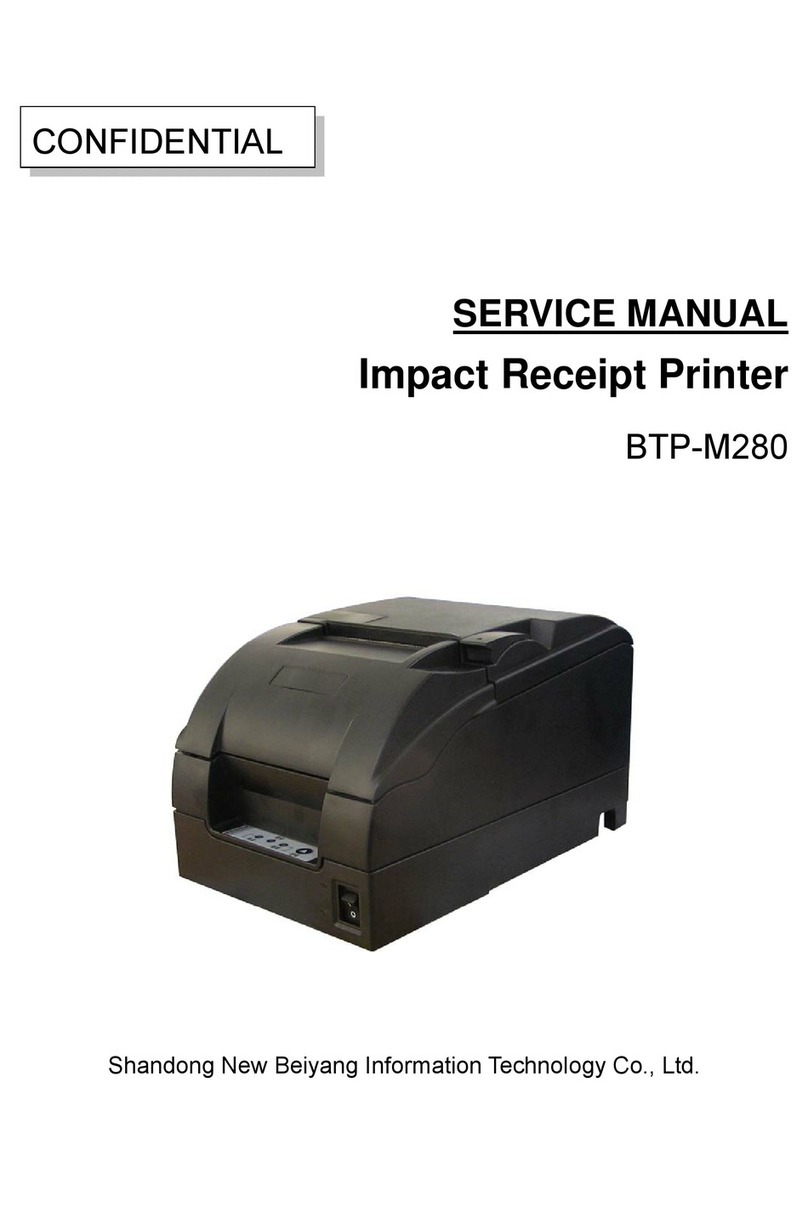
Shandong
Shandong BTP-M280 User manual
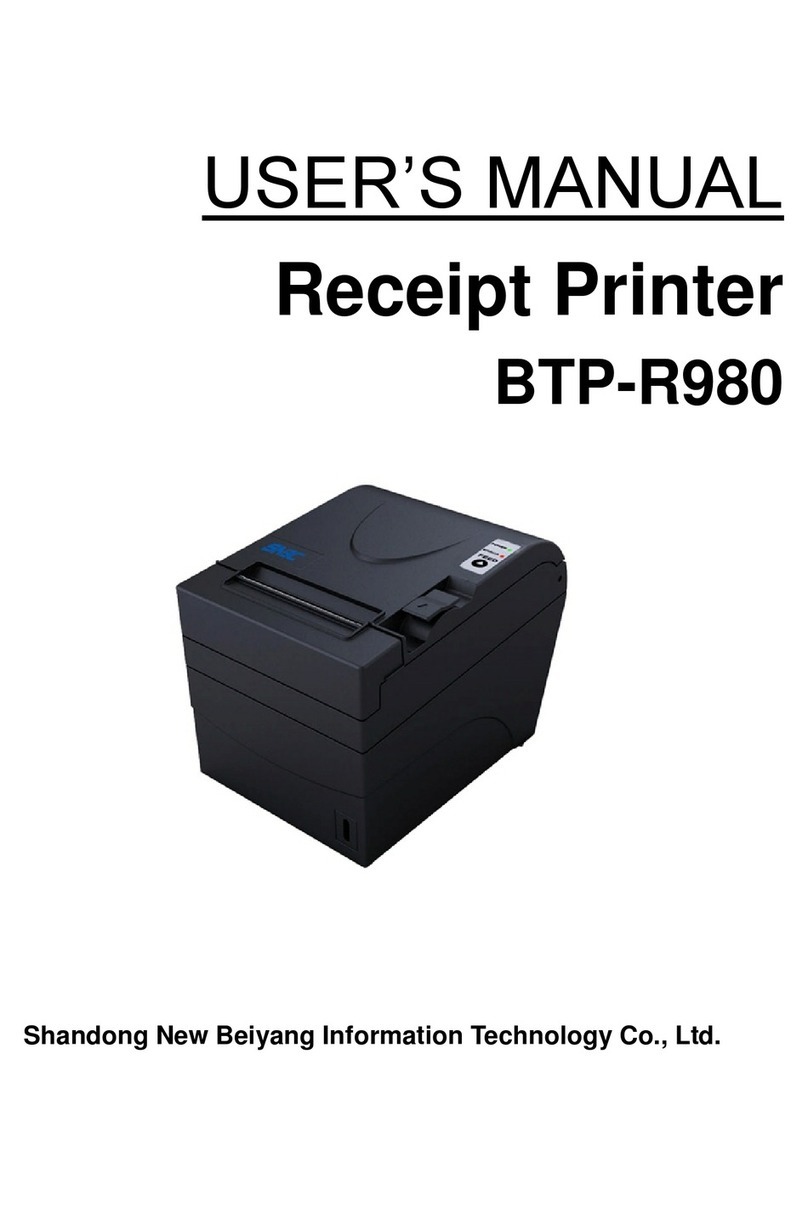
Shandong
Shandong BTR-R980 User manual
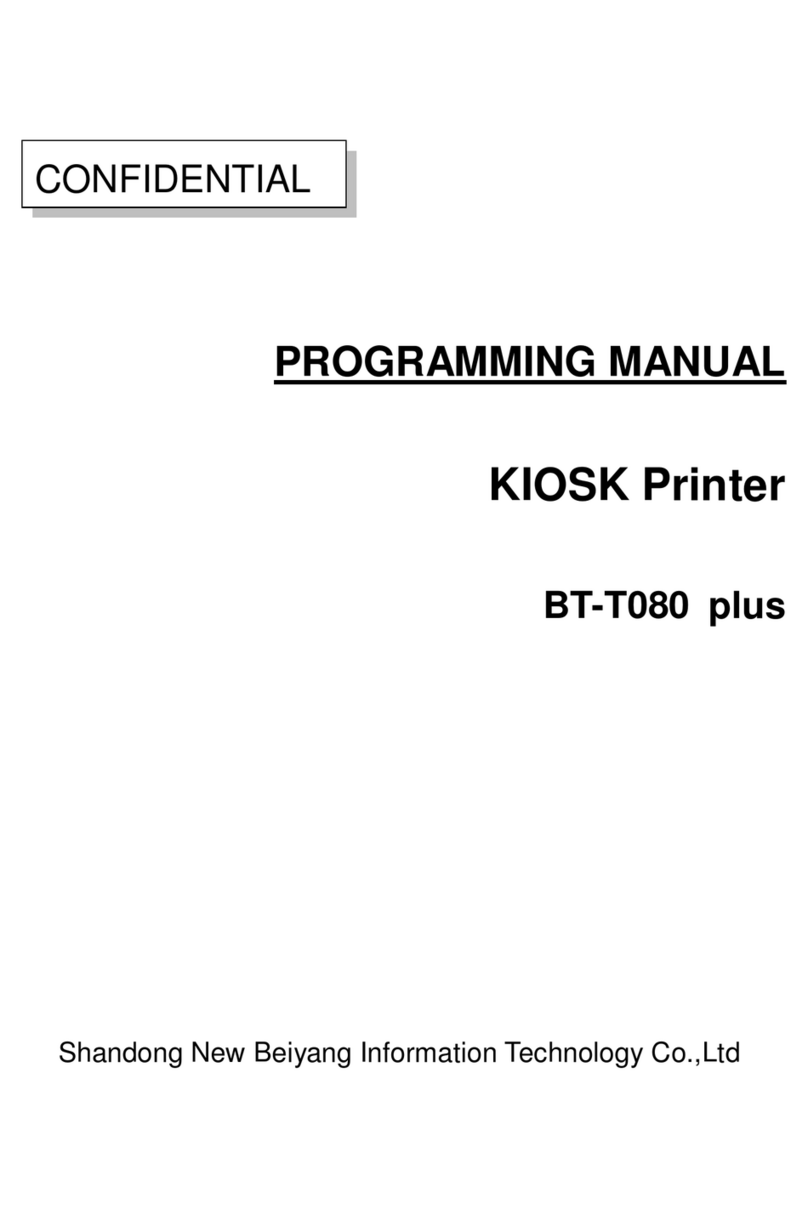
Shandong
Shandong BT-T080 plus Owner's manual
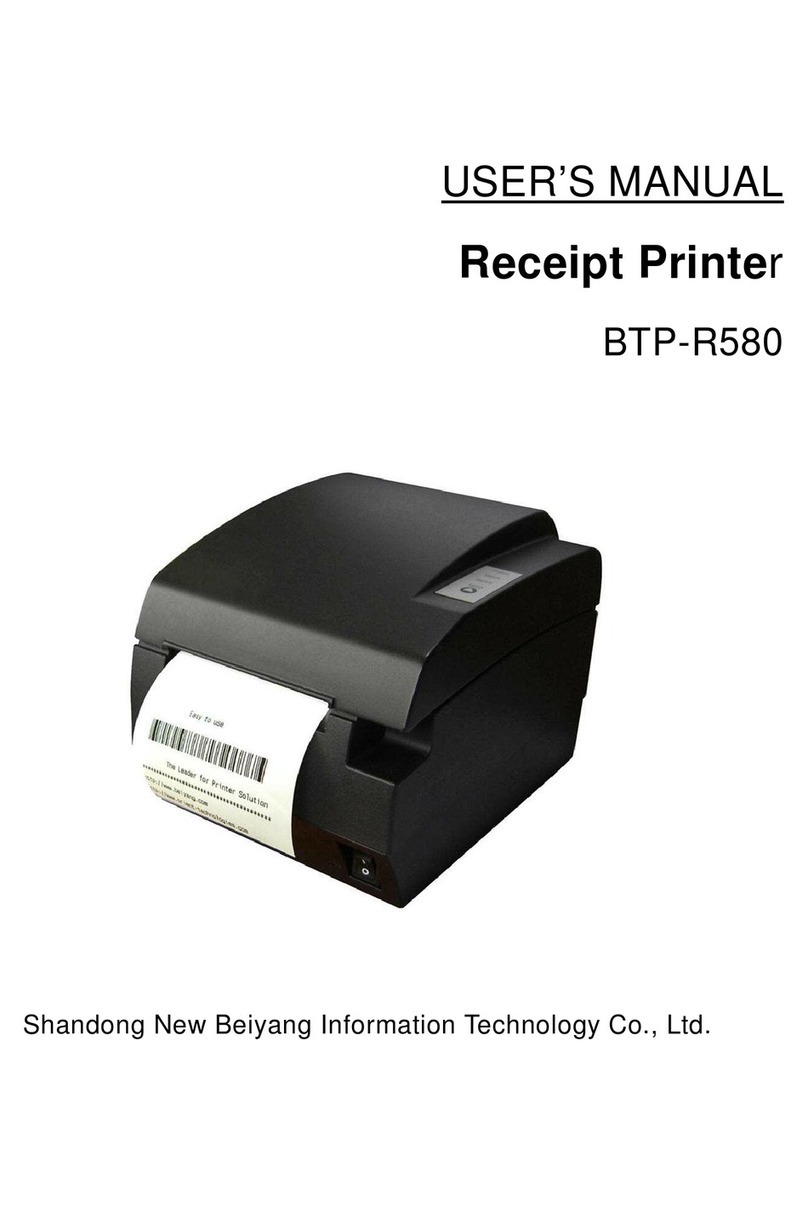
Shandong
Shandong BTP-R580 User manual
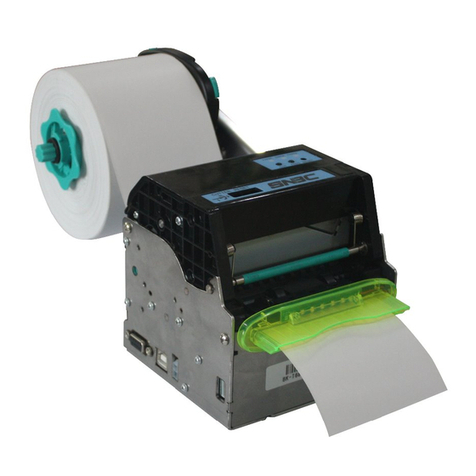
Shandong
Shandong BK-T680 User manual

Shandong
Shandong U80II User manual

Shandong
Shandong BT-T080R Owner's manual
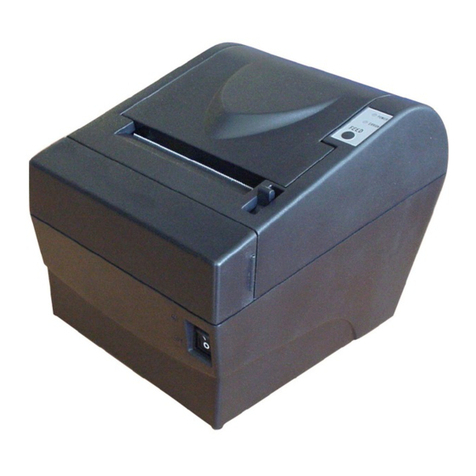
Shandong
Shandong BTP-2002NP User manual
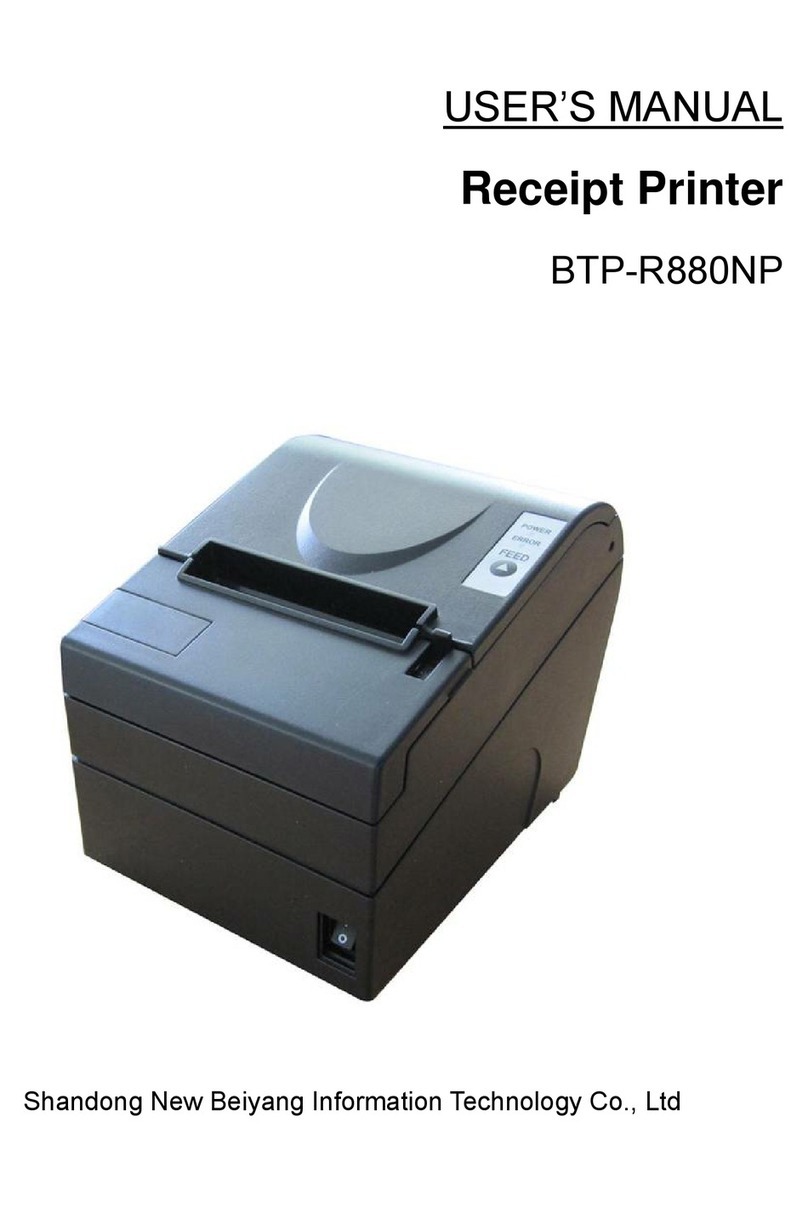
Shandong
Shandong BTP-R880NP User manual

